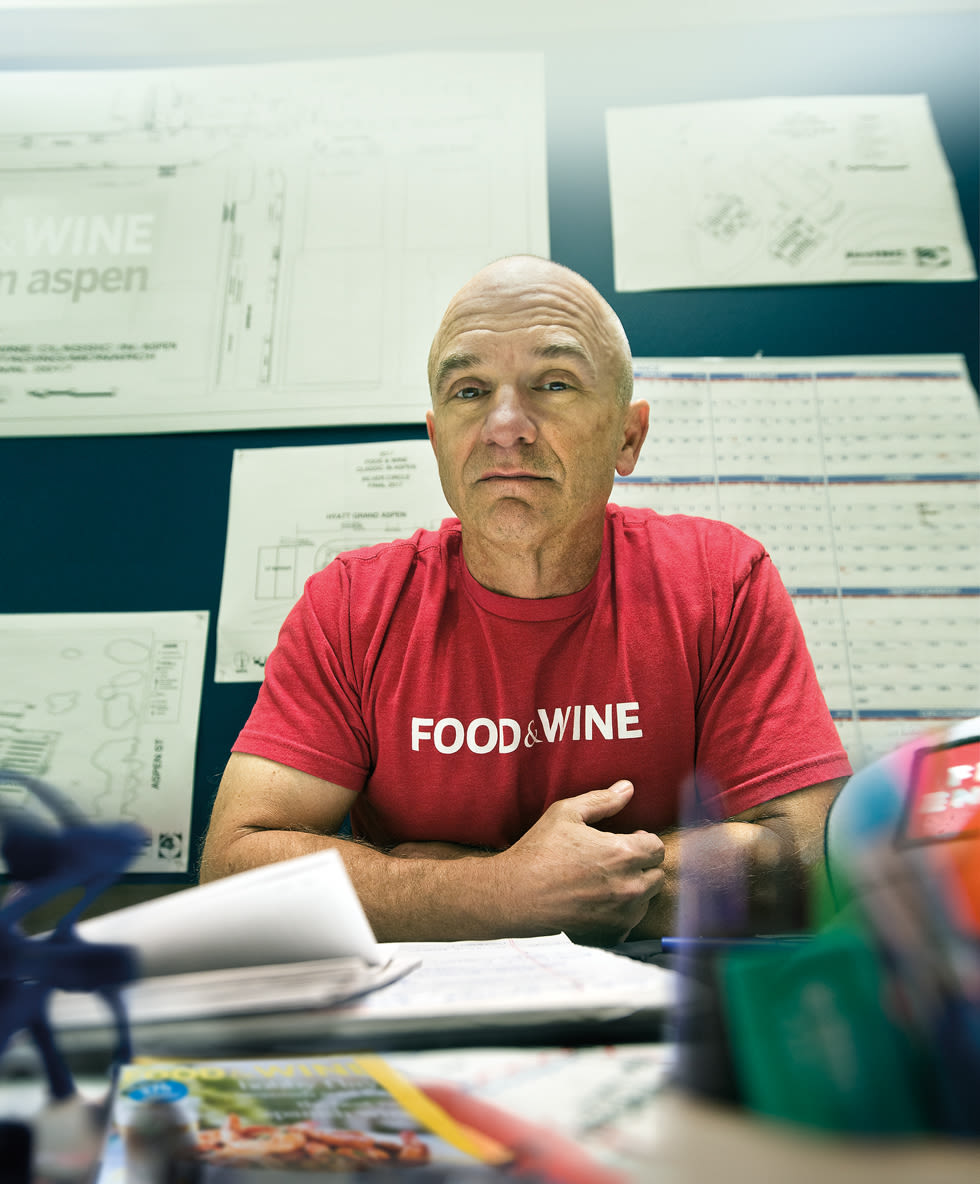A Q&A with Food & Wine Classic Producer Devin Padgett

Devin Padgett at his office in Basalt.
Image: Karl Wolfgang
Aspen Sojourner: This year marks the 30th anniversary of Food & Wine magazine’s annual Best New Chefs issue, as well as your 30th one at the Classic. What initially brought you here?
Devin Padgett: I am a chef by trade, and in the mid-1980s I was working for Bruce Auden in San Antonio. Bruce was a Best New Chef in 1988, so I came to Aspen to support him. The Classic had only been around for six years, but it had already developed a reputation that there was no other food and wine festival like it. I had lived a very nomadic lifestyle, but in Aspen I had found my spot. It was love at first sight.
What’s one of the biggest changes you’ve witnessed at the Classic since then?
Back then, chefs weren’t the celebrities they are today, and the Classic was right at the forefront of all that. Julia Child and Jacques Pépin were the early pioneers with shows and cookbooks, and they came here to Aspen, adding that stamp of authenticity. Now chefs are people you want to hear from, to know what they’re doing with food and their craft, and we’ve been part of that.
Impress us with some numbers to prove just how large this event is.
Over three days in Aspen with 5,000 people, we have more than 80 segments of programming; 600-plus volunteers; at least 80,000 square feet of tent structures; 300 exhibitors, sponsors, and partners; 36,000 glasses that we wash and turn over; something like 3.5 miles of cabling; and more than 20,000 bottles of wine and spirits.
What changes over the years have kept the Classic current?
There haven’t been many big changes, and that’s part of our success, honestly. We were able to develop a program that fits, not just for the magazine’s brand, but for Aspen. We’re not too big; we capped overall attendance at 5,000 people in 1996. We’re polished but not too polished. We’ve stayed true to the Aspen feel and being here in June. We say, “Blue skies, white tents, and green grass.”
How did you go from attending your first Classic to producing it?
The Little Nell was opening in 1989, and everybody was interviewing for its chef job. When my friend Richard Chamberlain became the first executive chef, I tagged along to become his executive sous chef. He volunteered to help coordinate the incoming chefs for the Classic. In 1990, he went away for spring break and in April—only two months ahead of time!—the magazine came out to do its preplanning, so in Richard’s place, I got really tight with the Food & Wine team. That turned into, “Hey, can you help us more?” and now my official title is Producer Special Projects.
And along the way you formed a production company, Devinc.
We have a staff of four year-round in Basalt, but by late May, with freelancers, there’s not enough room there for everybody. We also do some sports events, some music, and lots of food and wine festivals. I’m the managing director of the South Beach Wine and Food Festival and content producer of the New York City Wine and Food Festival.
So you’re not planning the Classic two months out anymore?
More like 18 to 24 months in advance. We have our dates deep into the future—we’re already talking about 2019 and who’s going to be the talent and what the programming will look like. I work with the team in New York year-round, every day, on developing, creating, organizing, and managing the Classic. Conception of the event is driven by creative ideas and what brands and sponsors will be coming out, and then we start injecting our other teams into the mix, which includes exhibitors, media, staff, and our amazing volunteers.
All that logistical juggling must have led to a few memorable snafus over the years.
I think my favorite was sometime in the early ’90s, when during a Grand Tasting in Wagner Park, the sprinklers came on. It was crazy town for about 10 minutes, with people running, screaming, and getting wet. But the chefs in the Singapore tent took their large, stainless-steel mixing bowls, put them over the sprinkler heads, and sat on them. Their tent stayed the driest.













































